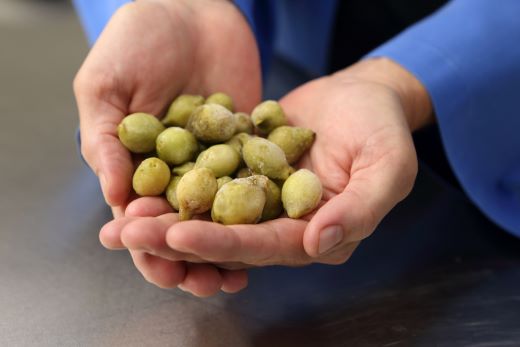An innovative diagnostic technique, sentinel lymph node biopsy, is now widely recommended in both melanoma and breast cancer to determine whether cancer cells have spread to the lymph nodes.
Sentinel lymph node biopsy – a procedure used in people diagnosed with melanoma to identify disease spread – has not increased in Australia, despite the availability of effective therapy options, leading experts to call for better access and data collection.
An innovative diagnostic technique, sentinel lymph node biopsy, is now widely recommended in both melanoma and breast cancer to determine whether cancer cells have spread to the lymph nodes.
However, Dr Caroline Watts, Research Fellow at the University of Sydney and Cancer Council NSW’s The Daffodil Centre and the Kirby Institute said Australian data suggests the technique is underused, potentially due to a lack of knowledge of the guidelines and training in the procedure.
In the Medical Journal of Australia, Dr Watts and colleagues write that in Australia sentinel lymph node biopsy (SLNB) is recommended for people with melanomas “of Breslow thickness greater than 1.0 mm, or more than 0.8 mm for those with other high risk pathological features”.
“Patients with a high-risk primary melanoma and positive SLNB result are eligible for adjuvant systemic therapy. SLNB also allows risk stratification for guiding the frequency and extent of follow-up.”
They write that earlier evidence suggested fewer than 50 percent of people with newly diagnosed invasive melanomas undergo SLNB.
A look at current data
To provide more recent evidence, Watts and colleagues analysed data from the Victorian Cancer Registry for all people with newly diagnosed invasive melanoma in Victoria during the 2018 and 2019 calendar years.
“During 2018 and 2019, 892 of 1855 people diagnosed with invasive melanomas of greater than 1.0 mm thickness (48 percent ) and 151 of 597 with melanomas of 0.8-1.0 mm thickness (25 percent) underwent SLNB,” they report.
“SLNB rates were similar in 2018 and 2019. Overall, 208 of 1050 SLNB results were positive (20 percent), including 12 of 149 results for melanomas of 0.8‒1.0 mm thickness (8 percent). The proportions of people who underwent SLNB (21 percent v 17 percent) and of people with positive results (23 percent v 18 percent) were each higher for those under 60 years of age than for older people. SLNB rates were similar for men and women.”
Watts and colleagues suggest that reasons for the underuse of SLNB included: “the knowledge and beliefs of GPs and dermatologists, their views of the usefulness of SLNB, patient characteristics and preferences, and the local availability of radiography and surgeons trained in the procedure”.
The way forward
The good news is attitudes to SLNB may be shifting thanks to new risk calculators which facilitate personalised estimates of the risk of sentinel node involvement based on age, Breslow thickness, histopathology subtype, mitotic rate, ulceration, and lympho-vascular invasion.
“These calculators provide more personalised risk estimates than national guidelines with cut-points based on Breslow thickness and ulceration alone,” Watts and colleagues write.
“The calculators improve targeting of SLNB by distinguishing patients for whom positive SLNB results are more likely from those at lower risk, including people with melanomas of greater than 1 mm thickness but without high-risk features.”
The authors acknowledged the limitations of their study, including the lack of prognostic information about clinically positive nodes and some other melanoma characteristics which were not included in the analysed dataset.
“Most cancer registries do not routinely collect these data, but they are important for evaluating clinical guideline adherence, melanoma treatment, health care use, and patient outcomes,” Watts and colleagues write.
“Up-to-date evidence-based information should be readily available to clinicians and patients for informing decisions about undertaking SLNB. The optimal use of online risk tools in practice, and barriers to patient access to SLNB, should be investigated.”
Declaration: Co-author Anne Cust is supported by a National Health and Medical Research Council (NHMRC) Career Development Fellowship. Caroline Watts received salary support from the NHMRC Centre of Research Excellence in Melanoma. Several of the authors are involved in guideline committees related to the management of melanoma.








